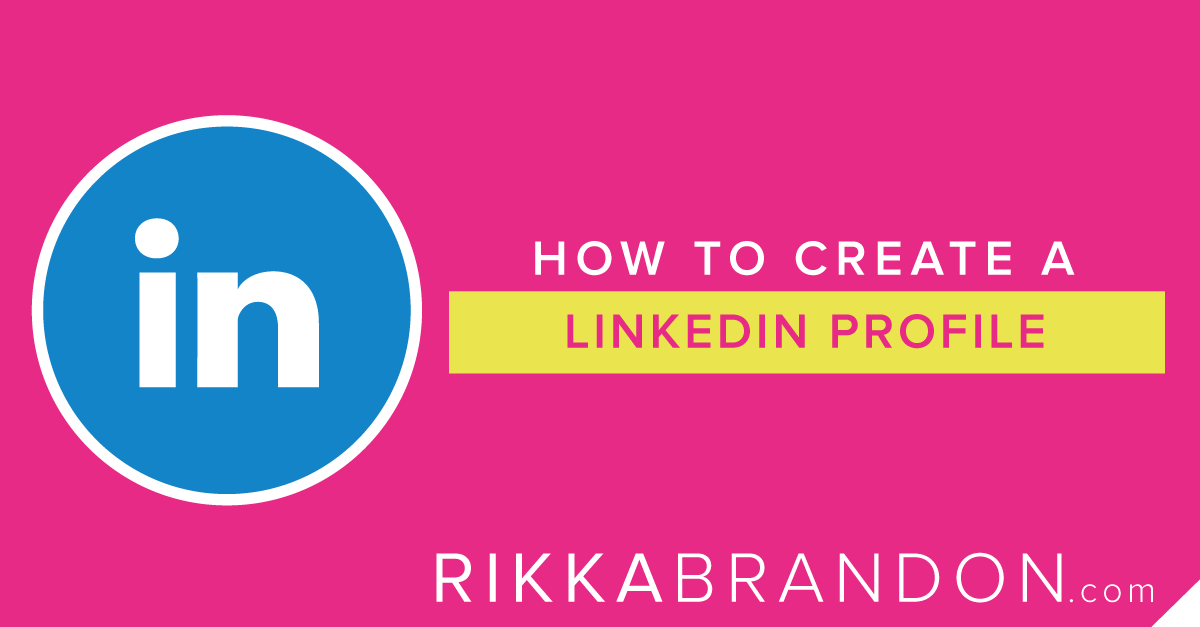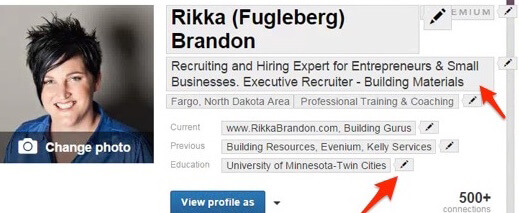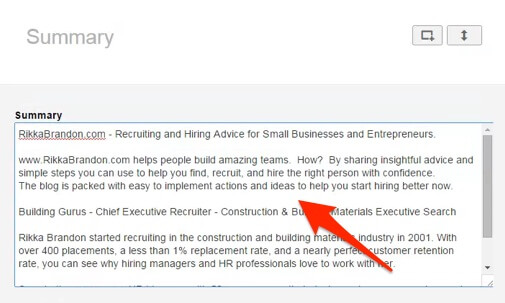Almost every professional who’s on the Internet these days has a LinkedIn Profile. You can find new customers, mentors, and of course employees on LinkedIn.
LinkedIn is currently THE social network for professionals all over the world. Open yourself up to a network of infinite opportunities by joining the millions of members on the platform. Here’s how to create a LinkedIn Profile:
1. Go to www.LinkedIn.com
If you want to learn more about LinkedIn, click on the “What is LinkedIn?” option in the menu across the top of the page. If not, you can proceed and sign-up by entering your first name, last name, email and password (with 6 or more characters) in the “Join LinkedIn Today” box on the right of the screen.
TIP: Don’t use a company email unless you own the company.
If something happens and you can’t access that email you will be locked out of your account. Use a frequently checked personal account. However, if you are the owner and plan to create a company page you will need to use an email affiliated with the company.
2. Confirm your account through your email address.
You will receive an email from LinkedIn requesting you to confirm your account. Follow the confirmation instructions. Once you’ve done this, sign in to LinkedIn at www.LinkedIn.com and get started creating your LinkedIn Profile.
3. Start editing and updating your profile.
This will be quick and easy. Underneath your name, enter your sub-heading, your location and industry/company to which you currently belong. Upload a professional portrait, if you don’t have a current headshot have a friend take one with your phone or spend the $25-50 to get a professional headshot done at a photography studio.
It goes without saying that LinkedIn isn’t a place for your swimsuit selfies. Here are some tips from a professional photographer for a great LinkedIn Profile Headshot.
4. Edit your qualifications.
Add your employment and education history. Be specific but brief. Focus on using keywords and terms that people who are looking for an expert in your field would use. Focus on your achievements and actual results. Make it easy for people who are looking for to find you AND for them to see that you know your stuff.
5. Add a Summary.
Highlight your strengths and what you have to offer. Getting this right can take some time, but you can always go back and edit this part. I’ve edited mine every 6-12 months for over 10 years.
Yes, I’ve been on LinkedIn a long time…in fact, I was a BETA user of LinkedIn way back when.
6. Add additional information and specialties.
This is an extension of the Summary Section of your LinkedIn Profile. Enter your interests, personal details and contact info. Consider the skills you want to put in here. You don’t want to make it too hodgepodge–potential customers might think you’re a “Jack of all trades” and a Master of none.
Emphasize the skills you’re particularly good at—ones that your friends, colleagues, employers, and clients can vouch you for.
7. Add Connections.
You can have LinkedIn search through your email address book to connect you with people you already know. You can also search a person’s name, job title and/or company. As long as you have their email address, you can add them to your network.
8. Add Websites.
Link your company’s website, your blog (if you have any) and/or Facebook and Twitter accounts.
You don’t have to link to other websites, but it adds to your credibility. Just make sure the website you link to doesn’t put you in a bad light in terms of professionalism. You can also edit the default text on this part to say “My Blog” or “Open Jobs”.
9. Get Recommendations.
Ideally, you should have at least three (3) professional recommendations.
Ask your former bosses or colleagues. Return the favor by recommending them as well. As a business owner it is important to keep your recommendations current.
A good way to do this is to set a calendar reminder once a quarter to ask relevant customers or vendors if they’d be willing to give you a recommendation and of course return the favor if appropriate.
10. Add Applications.
Although these are not necessary, having applications can make your profile more complete and thorough. There are a number of apps where you can share files and presentations, share books you’ve read and books you would like to recommend, share your blog stream, etc.
NEXT…
As you become more familiar with the features of LinkedIn, consider joining groups related to your industry. Through this, you can meet a lot of relevant and new people who you can share ideas with, and who can connect you with the right people.
Job recommendations can pop out of the casual conversations in groups, so it’s important that you stay active.
Wahoo! You made it to the bottom of the post!
I'm going take a quick moment and pat myself on the back for writing content you liked enough to read to the end!
Do you know anyone else who'd read it to the end? If so, make it easy for them and share it on Twitter, Facebook, and Pinterest by using the easy share buttons below.




Recent Comments